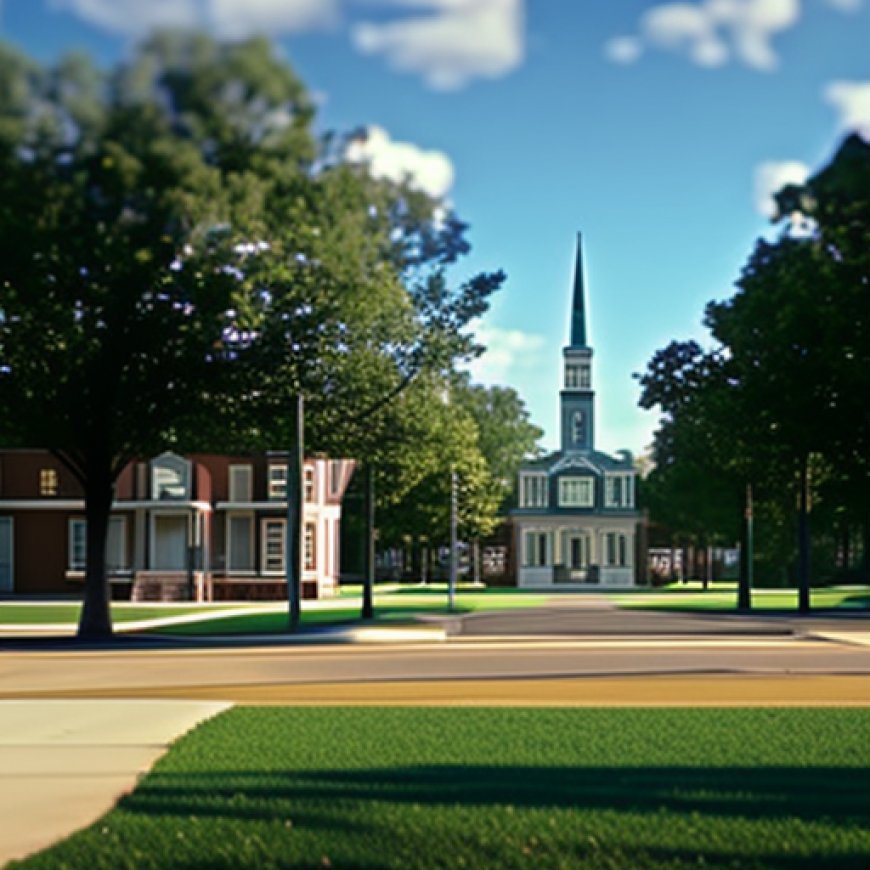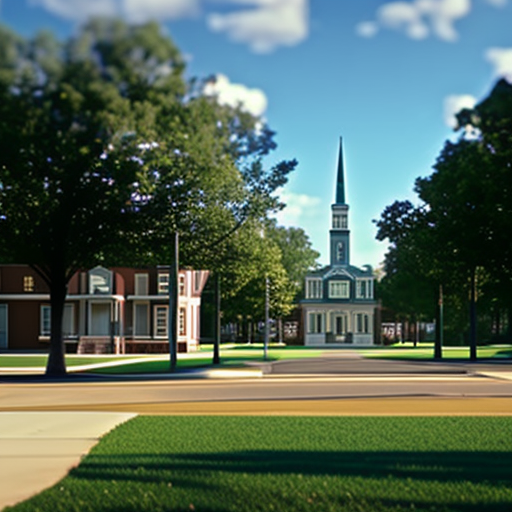Woodlawn Central is the smart investment the community needs
Woodlawn Central is the smart investment the community needs Chicago Sun-Times


Woodlawn: A Model of Sustainable Development
Woodlawn, a neighborhood on the South Side of Chicago, is facing the challenge of preventing displacement of its low-income residents. Despite its abundant resources, including lakefront access, beautiful public parks, excellent educational institutions, convenient public transportation, and growing retail, Woodlawn still struggles economically. The median and per capita household incomes in Woodlawn are significantly lower than the citywide figures, and it has the lowest median net worth among all 77 Chicago community areas. With the expansion of the University of Chicago and the construction of the Obama Presidential Center in the area, the risk of displacement has become a pressing concern.
To address this issue, Woodlawn has focused on providing affordable housing options. The neighborhood has a good supply of both legally restricted and naturally occurring affordable housing, as well as vacant city-owned lots with affordable housing development requirements. However, for underinvested communities like Woodlawn to thrive, they need more than just affordable housing. They need community assets that promote demographic diversity and contribute to economic development, such as improved transportation, schools, retail, restaurants, and housing.
Mixed use, mixed income
Woodlawn Central, a mixed-use development project, aims to create demographic diversity and economic development in Woodlawn. The project will transform eight acres of parking around the Apostolic Church of God into a new community. It includes a variety of housing options, including workforce housing targeted at households that earn too much to qualify for traditional affordable housing subsidies, as well as market-rate, senior, and affordable housing. The development plan also includes improved public transit, new retail and office spaces, a vertical greenhouse, and a “black box” theater. This mixed-use, mixed-income approach was developed with input from Woodlawn residents and stakeholders and is supported by the Network of Woodlawn and One Woodlawn initiative.
Woodlawn Central aims to be a model of urban regeneration that promotes wealth-building without displacement. By increasing local employment opportunities, attracting a diverse mix of residents, and supporting thriving businesses, better schools, and improved housing, the project seeks to lower crime rates, sustain community organizations, and drive long-term economic development.
Concentrated poverty destroys possibilities
The importance of a diverse economic mix is evident in the negative impacts of concentrated poverty. Research has shown that neighborhoods with high levels of poverty have detrimental effects on the health and well-being of residents. Woodlawn Central aims to boost economic development and reduce poverty without displacing community members. By creating a live-work-play environment with a mix of amenities, the project will support equitable economic development and encourage higher rates of homeownership, which is crucial for building wealth and preventing displacement.
Woodlawn, where more than 82% of residents are Black, deserves sustainable and fair urban development. Projects like Woodlawn Central can provide the same prosperity and amenities enjoyed by residents of richer, better-resourced communities in Chicago’s downtown and North Side. As a longtime South Side and former Woodlawn resident, I believe that embracing a development that offers improved infrastructure, safe and sustainable housing, and greater access to wealth-building is essential for creating a thriving community.
Duwain Bailey is the executive director of the Network of Woodlawn.
The Sun-Times welcomes letters to the editor and op-eds. See our guidelines.
The views and opinions expressed by contributors are their own and do not necessarily reflect those of the Chicago Sun-Times or any of its affiliates.
SDGs, Targets, and Indicators
1. Which SDGs are addressed or connected to the issues highlighted in the article?
- SDG 1: No Poverty
- SDG 8: Decent Work and Economic Growth
- SDG 10: Reduced Inequalities
- SDG 11: Sustainable Cities and Communities
2. What specific targets under those SDGs can be identified based on the article’s content?
- SDG 1.4: By 2030, ensure that all men and women, in particular, the poor and the vulnerable, have equal rights to economic resources, as well as access to basic services, ownership, and control over land and other forms of property, inheritance, natural resources, appropriate new technology, and financial services, including microfinance.
- SDG 8.5: By 2030, achieve full and productive employment and decent work for all women and men, including for young people and persons with disabilities, and equal pay for work of equal value.
- SDG 10.2: By 2030, empower and promote the social, economic, and political inclusion of all, irrespective of age, sex, disability, race, ethnicity, origin, religion or economic or other status.
- SDG 11.1: By 2030, ensure access for all to adequate, safe and affordable housing and basic services and upgrade slums.
3. Are there any indicators mentioned or implied in the article that can be used to measure progress towards the identified targets?
- Indicator 1.4.2: Proportion of total adult population with secure tenure rights to land, with legally recognized documentation and who perceive their rights to land as secure, by sex and type of tenure.
- Indicator 8.5.1: Average hourly earnings of female and male employees, by occupation, age group, and persons with disabilities.
- Indicator 10.2.1: Proportion of people living below 50 percent of median income, by sex, age, and persons with disabilities.
- Indicator 11.1.1: Proportion of urban population living in slums, informal settlements, or inadequate housing.
Table: SDGs, Targets, and Indicators
| SDGs | Targets | Indicators |
|---|---|---|
| SDG 1: No Poverty | Target 1.4: By 2030, ensure that all men and women, in particular, the poor and the vulnerable, have equal rights to economic resources, as well as access to basic services, ownership, and control over land and other forms of property, inheritance, natural resources, appropriate new technology, and financial services, including microfinance. | Indicator 1.4.2: Proportion of total adult population with secure tenure rights to land, with legally recognized documentation and who perceive their rights to land as secure, by sex and type of tenure. |
| SDG 8: Decent Work and Economic Growth | Target 8.5: By 2030, achieve full and productive employment and decent work for all women and men, including for young people and persons with disabilities, and equal pay for work of equal value. | Indicator 8.5.1: Average hourly earnings of female and male employees, by occupation, age group, and persons with disabilities. |
| SDG 10: Reduced Inequalities | Target 10.2: By 2030, empower and promote the social, economic, and political inclusion of all, irrespective of age, sex, disability, race, ethnicity, origin, religion or economic or other status. | Indicator 10.2.1: Proportion of people living below 50 percent of median income, by sex, age, and persons with disabilities. |
| SDG 11: Sustainable Cities and Communities | Target 11.1: By 2030, ensure access for all to adequate, safe and affordable housing and basic services and upgrade slums. | Indicator 11.1.1: Proportion of urban population living in slums, informal settlements, or inadequate housing. |
Behold! This splendid article springs forth from the wellspring of knowledge, shaped by a wondrous proprietary AI technology that delved into a vast ocean of data, illuminating the path towards the Sustainable Development Goals. Remember that all rights are reserved by SDG Investors LLC, empowering us to champion progress together.
Source: chicago.suntimes.com

Join us, as fellow seekers of change, on a transformative journey at https://sdgtalks.ai/welcome, where you can become a member and actively contribute to shaping a brighter future.







